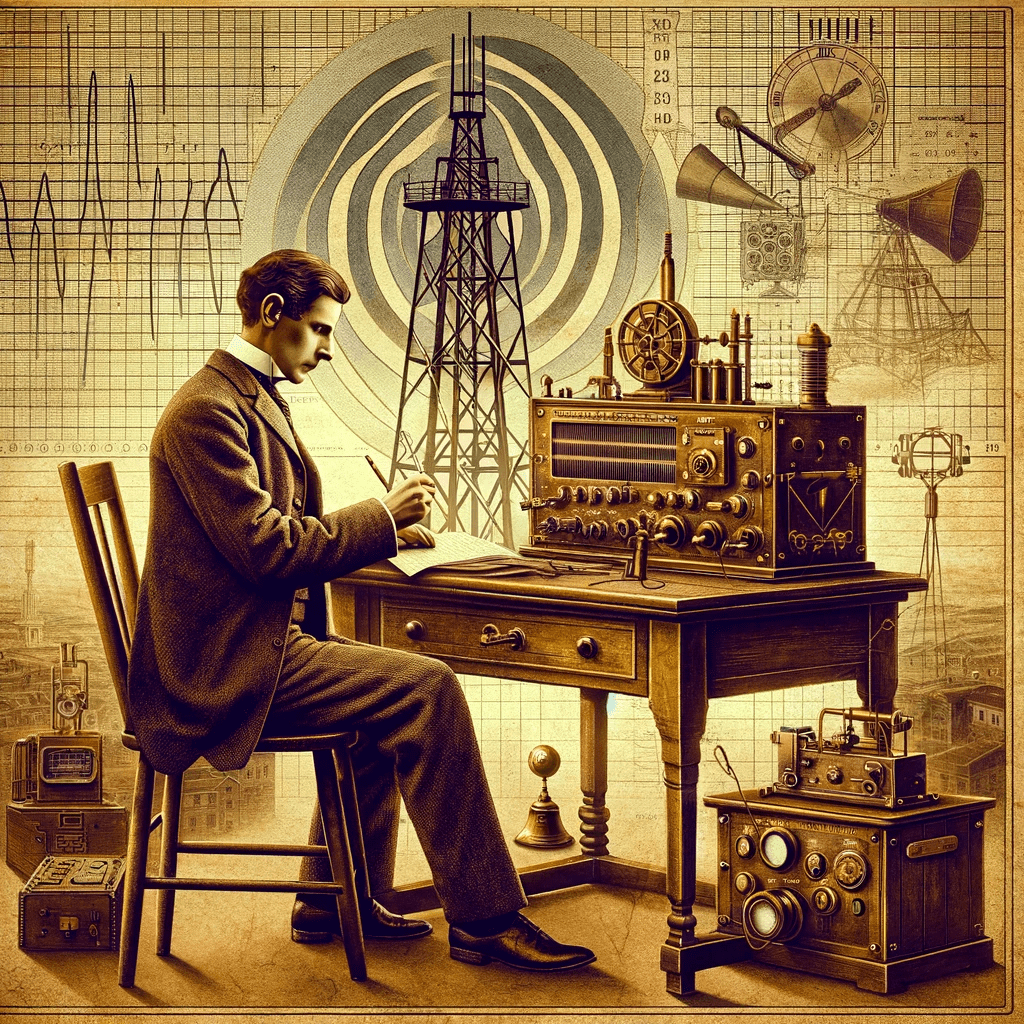Guglielmo Marconi

Guglielmo Marconi is celebrated as a pioneering figure in the development of radio communication technology. Born on April 25, 1874, in Bologna, Italy, Marconi was the second son of Giuseppe Marconi, an Italian country gentleman, and Annie Jameson, daughter of Andrew Jameson, a whiskey distiller from Dungarvan, Ireland.
His family’s wealth and connections enabled access to a range of private tutors, and from them, Marconi gained a broad education, with a special emphasis on the physical sciences. He studied chemistry, math, and physics, and was particularly interested in the work of Heinrich Hertz, who demonstrated the existence of electromagnetic waves.
His interest in radio waves and his experiments with Hertz’s work would be the foundation of his career. Marconi was fascinated by the potential of these invisible waves to transmit information, and he began a series of trials and experiments at his father’s estate. In 1896, he traveled to England, where he patented the first-ever wireless telegraphy system.
Wireless telegraphy refers to the transmission of telegraph messages without the use of physical wires. Guglielmo Marconi is often credited with developing the first practical system for wireless telegraphy, which revolutionized the way the world communicated.
In the late 19th century, scientists like James Clerk Maxwell and Heinrich Hertz had already laid the theoretical and experimental groundwork for understanding electromagnetic waves, but it was Marconi who found a way to exploit this knowledge for practical communication purposes.
Marconi’s first wireless telegraphy system used a transmitter to generate a series of electrical impulses, representing the dots and dashes of Morse code. These impulses were used to create high-frequency electrical oscillations, or radio waves. A tall antenna was used to broadcast these radio waves out into the surrounding environment.
At the receiving end, another antenna was used to intercept these radio waves, and a coherer (a primitive form of radio signal detector) was used to detect the presence of the radio waves and decode the Morse code signals. Initially, the range of this system was very limited, but Marconi progressively improved his apparatus, extending its reach.
Marconi’s first successful experiment in wireless telegraphy took place in 1895 in Italy, where he managed to send a signal over a distance of about 1.5 miles. His subsequent demonstrations of wireless telegraphy in Britain and across the Atlantic Ocean in the early 20th century revolutionized long-distance communication, leading to the development of modern radio technology.
The first-ever wireless telegraphy system was a monumental breakthrough because it made “wireless” communication possible over vast distances, a concept that has since evolved into the myriad of wireless communication technologies we rely on today, including radio, television, cell phones, and Wi-Fi.
Marconi’s dedication to the technology and its application led to the founding of the Marconi Telegraph Company in 1897. His work in developing and improving wireless technology culminated in the first successful transatlantic wireless message in 1901, sent from Cornwall, England, to Newfoundland, Canada. This achievement was a momentous milestone in communication technology, for which Marconi shared the Nobel Prize in Physics in 1909.
- Marconi’s transatlantic radio signal’s success is backed by a reliable source, the official Nobel Prize website, affirming that he and Karl Ferdinand Braun were awarded the Nobel Prize in Physics in 1909 for their contributions to the development of wireless telegraphy.
- The invention of the “Marconi System” of wireless telegraphy, recognized in his British patent number 12,039, was a revolutionary achievement. This is well documented in the UK’s Intellectual Property Office records.
- In 1912, following the Titanic disaster, Marconi testified before a US Senate committee inquiry about the role of his wireless operators aboard the ship. The event highlighted the importance of radio communication in maritime safety. This fact is recorded in the official report of the United States Senate inquiry into the Titanic disaster.
In terms of scholarship about Marconi, there are numerous books and studies. Marc Raboy’s “Marconi: The Man Who Networked the World” is an extensive biography that explores Marconi’s life and contributions. Another notable book is “Signor Marconi’s Magic Box” by Gavin Weightman, which offers an accessible and engaging history of Marconi and the invention of the radio.
Marconi did produce many technical papers, articles, and patent documents relating to his work. One example is “Wireless Telegraphy,” a paper presented at the Royal Institution in 1897. His written contributions mostly pertain to his technical work in radio communication.
If we consider the scenario that Guglielmo Marconi was connected to a 1933 UFO incident in Italy, the extent and nature of his involvement could vary based on different assumptions.
Given Marconi’s reputation as a renowned scientist and innovator in radio communication, if such an incident were true, it’s plausible that he could have been consulted for his technical expertise. It’s important to note that during the 1930s, Marconi was working on microwave radio technology, which represented the cutting edge of communication technology at the time.
In this hypothetical situation, Marconi might have been asked to assist with attempts to understand and reverse-engineer any potential communication technology that could have been found as part of the alleged UFO. This could involve analyzing the craft’s communication systems, if any were present, and trying to understand how they functioned.
Marconi may have led a special task force, the Gabinetto RS/33, created by Mussolini to study and reverse-engineer the alleged UFO. In such a role, Marconi would have likely coordinated a team of scientists and researchers, guiding their efforts to analyze and understand the potential alien technology.
Guglielmo Marconi was an extraordinary figure who revolutionized the world of communication. Born into a world where long-distance messages could take days or even weeks to arrive, Marconi’s pioneering work in wireless telegraphy transformed the nature of global interaction, bridging vast distances with the transmission of radio waves.

